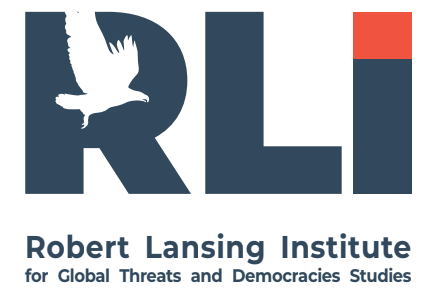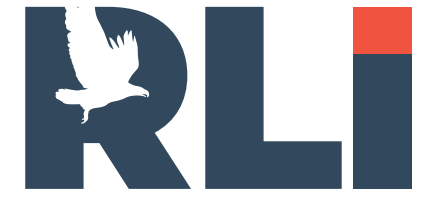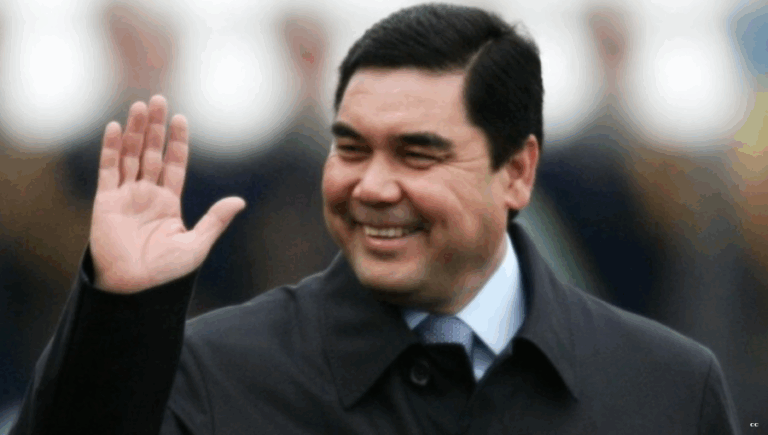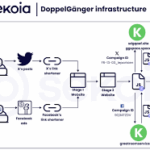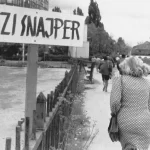Turkmenistan today is one of the most repressive regimes on the planet: a family-based dictatorship centered on Gurbanguly Berdymukhamedov (“Arkadag”, National Leader) and his son, President Serdar. Freedom House classifies it as a consolidated authoritarian regime with the lowest democracy score, noting that Serdar’s presidency in practice means a return of his father as the dominant figure after 2023 constitutional changes that made the Halk Maslahaty (People’s Council) – chaired by Gurbanguly – the supreme power center.
BTI likewise describes Turkmenistan as a dictatorship with one of the world’s most restrictive systems, deep economic crisis since 2015, and intensifying repression amid rising popular discontent and unprecedented emigration.
This duumvirate – father as National Leader and chairman of the supreme body, son as formal president – is the heart of the succession architecture, but also a potential fault line: it concentrates all power in one clan (Teke/Ahal), alienating other tribal, regional and bureaucratic groups.
Historical precedent: the 2002 assassination/coup affair
In November 2002, Turkmen president Saparmurat Niyazov survived an attack on his motorcade that authorities labeled an assassination and coup attempt. Western analyses and OSCE documentation show that the regime used this event to justify mass arrests, show trials and a sweeping crackdown, and that the reality of the “coup” remains disputed – some opposition sources believe it was at least partly staged to eliminate rivals.
coup narratives can be both real and instrumentalized in Turkmen politics.
2.2 The reported 2023 “attempted coup”
In July 2023, the Telegram channel Turkmen.news reported that security services had foiled an armed insurrection in Ashgabat, arresting around 20 people, including the son of a former agriculture minister (who allegedly died in custody) and a deputy interior minister.
- The story was later denied by Turkmen diplomats as “fake news”, and the original Telegram post was removed.
- Because of the near-total media blackout, it is impossible to verify whether there was a real plot, a fabricated pretext for purges, or a mix of both.
- Analysts highlight tribal tensions (dominance of the Teke tribe and resentment among other groups) as a structural driver that could make genuine coups more likely over time.
So there is A hard data point: a credible, though unverified, report of an attempted coup or purge at high levels in 2023.
- A structural assessment: tribal, economic, and elite tensions are growing beneath the surface.
Given the opacity, it is possibleonly sto peak in qualitative probabilities:
Short term (1–2 years): Low but non-zero
Factors reducing the likelihood:
- Hyper-concentration of power: the president and National Leader directly control all security bodies via the State Security Council, including the Ministry of National Security, Interior Ministry, border troops and the presidential security service.
- Extremely dense surveillance and repression: opposition is either in exile or crushed; hundreds of political prisoners and disappearances are documented.
- No legal opposition, no independent media, no civil society, making organized conspiracies very difficult.
Factors increasing the likelihood:
- Deep and prolonged economic crisis, food shortages, dual exchange rate and massive emigration to Turkey and Russia erode regime legitimacy and create discontent even within elites who see their own fortunes threatened.
- Tribal/regional grievances against the dominance of the Ahal-Teke elite; analysts argue this “nation of tribes” dynamic is the most serious long-term threat to the regime.
- Evidence of elite purges in the security sector (ministers fired, arrested, humiliated on TV) shows that distrust within the power apparatus is high.
Judgment: In the immediate horizon the regime still has enough coercive capacity and cohesion to deter organized coups. A classic palace coup is unlikely but not impossible; the 2023 affair suggests that at least small conspiracies are conceivable.
Medium term (3–7 years): Rising to low–moderate
Drivers that could push risk upward:
- Succession friction inside the family – if health problems, generational conflict or business disputes emerge between Serdar, his father, and other clan members.
- Worsening water/climate crisis (Amu Darya, Afghan canal) and continued economic stagnation, amplifying intra-elite blame games.
- External shocks – e.g. collapse in gas revenues or transit routes, or a regional security crisis spilling from Afghanistan.
A coup might look less like a mass uprising and more like:
- An inner-circle reconfiguration (“coup in slow motion”) where security chiefs and family factions reshuffle positions; or
- A tribally-inflected putsch, if non-Teke elites decide they will never get fair access to power under the current arrangement.
Potential coup actors and beneficiaries
Inner family factions
- Gurbanguly & close clan – already institutionalized as “National Leader”. They benefit from the status quo but might pre-emptively remove Serdar or other relatives if they are seen as disloyal or incompetent.
- Younger generation relatives (cousins, in-laws) who control key business sectors or security portfolios could become rivals if Serdar tries to build his own power base.
A coup scenario here is intra-family: replacing one family figurehead with another while preserving the system.
Security and intelligence elites
The mapping of Turkmen security sector shows:
- A dense network of military, MNS (security), MIA (police), border and presidential guards, all subordinated directly to the president and State Security Council.
- Regular purges of ministers and generals for alleged corruption or incompetence, which creates fear but also resentment.
Potentially pivotal actors:
- Deputy ministers of security, internal affairs, and high-ranking presidential guards who control direct access to the leader and to armed units in Ashgabat.
- Mid-level officers marginalized by rapid promotions of loyal but inexperienced younger cadres.
These actors could:
- Lead a palace coup under the banner of “saving stability” and “correcting mistakes” if they perceive the family as jeopardizing their interests or foreign relations.
- Or serve as enforcers of the family, crushing any rival attempts.
Disgruntled technocrats and economic elites
- Managers in state gas companies, construction, and trade are under enormous pressure: failing to deliver on grand projects or gas deals risks ruin and arrest.
- Some might quietly support a coup if it promised more rational economic management and protection of their property.
But they lack troops, so they would play a supporting role – providing financing, logistics and foreign contacts rather than leading.
Tribal and regional networks
Tribal identity remains foundational; the Teke (especially Ahal) dominate state and security structures, while other tribes and regions feel excluded.
Possible dynamics:
- A coup led by non-Teke officers and officials claiming to end clan monopoly and restore justice.
- Or a counter-coup from within the Teke elite if they see any attempt at power sharing as an existential threat.
The risk here is that a coup could break the delicate tribal balance, leading not to liberalization but to harsher domination by another group or even partial fragmentation.
Foreign actors and their interests
Russia
- Russia has significantly increased its diplomatic and economic activity in Turkmenistan since 2022, aiming to integrate Turkmenistan into Moscow’s energy and transport projects (e.g. using Turkmen pipelines to send Russian gas to China, pushing the North–South corridor).
- However, Ashgabat is wary and has criticized Russia’s regional gas initiatives as a threat to Turkmen interests, an unusually sharp public statement by Turkmen standards.
For Moscow, the ideal is a stable but pliant regime:
- A sudden coup is risky – it could bring an unpredictable leadership.
- Russia would be more likely to influence intra-elite maneuvers (supporting one faction over another via economic deals, arms, or security cooperation) than openly sponsor regime change.
China
- China is by far Turkmenistan’s main gas customer; around three-quarters of Turkmen exports go to China via the Central Asia–China pipeline.
- Beijing has financed pipelines and the Galkynysh field, creating a “resources for investment” model.
China’s primary interest is predictable gas flows:
- A coup that disrupts transit or renegotiates contracts is undesirable.
- Beijing is likely to back any faction that guarantees stability and will be careful not to appear involved in domestic politics. Its leverage is mainly economic.
Turkey
- Turkey promotes itself as a gas hub and has just signed a deal to import Turkmen gas via Iran, expanding Ankara–Ashgabat energy ties.
- Turkmenistan also fits into Ankara’s broader pan-Turkic narrative (Organization of Turkic States).
Ankara’s interest:
- A leadership that is open to westward energy flows (toward Turkey and potentially Europe), and to cultural/political cooperation among Turkic states.
- But Turkey is unlikely to openly back a coup; it can, however, provide soft backing (legitimacy, investment) to whichever elite group appears ascendant and cooperative.
Iran
- Iran is both a neighbor and transit corridor for Turkmen gas swaps. Ashgabat recently concluded agreements to send gas to Turkey via Iran.
- Tehran wants a neutral, predictable Turkmenistan that does not tilt wholly toward Ankara or Western projects bypassing Iran.
It might quietly prefer factions that value Iranian transit routes, but its capacity to shape coups is limited compared to Russia or China.
EU and the West
- The EU and U.S. see Turkmenistan as a potential, but problematic, alternative gas source, blocked by legal, technical and political obstacles (Caspian status, human rights, investment climate).
- Western leverage is weak; they have little direct influence on elite rivalries.
- They are more likely to react after an event – by adjusting sanctions, investment, and diplomatic recognition – than to shape it.
key drivers. Of a coup
Regime over-concentration and succession tension
- The duumvirate locks the entire state around one family and one tribe. Any misstep – economic shock, health crisis, or foreign policy blunder – can quickly become a question of “replace the person to save the system”.
- Security elites, already shaken by purges and accusations, may decide that replacing Serdar or even sidelining Gurbanguly is necessary to preserve their own survival.
Socio-economic and environmental stress
- Long-term economic crisis, food shortages, unemployment and emigration are eroding passive loyalty.
- Climate/water stress (Qosh Tepa canal in Afghanistan, methane and desertification) threatens agriculture and rural livelihoods, potentially fueling localized unrest that elites may fear could escalate.
- Under such stress, elites may see a controlled coup as preferable to uncontrolled collapse.
- Tribal and regional imbalance
- Concentration of posts and resources in the Ahal-Teke hands leaves other tribes feeling permanently marginalized.
- If one non-Teke coalition coalesces – perhaps around a dismissed minister or security chief – it could attempt to seize power, presenting itself as a “national unity” alternative to family rule.
Consequences of a coup (or even a serious attempt)
Domestic
- Repression spike: As 2002 showed, even an alleged or small-scale coup can be followed by mass arrests, show trials, and new restrictions on travel and communication.
- Elite reshuffling: The immediate outcome may be simply another member of the same elite, or same tribe, taking power – no liberalization, just a personnel change.
- Risk of tribalized conflict: If the putsch has a clear tribal base, retaliation could destabilize the territorial and ethnic balance of the country.
Regional and energy
- Gas exports: Any disruption of decision-making in Ashgabat could temporarily delay or renegotiate:
- Exports to China,
- New flows to Turkey via Iran,
- Potential deals with Russia using Turkmen infrastructure.
- Foreign alignments:
- A Russia-leaning faction might accelerate integration into Moscow-led corridors and give Gazprom more leverage over Turkmen transit.
- A Turkey- and China-friendly faction might push harder for east–west routes and Turkic integration while keeping Beijing as primary buyer.
- A weak or fragmented post-coup regime could invite greater external intrusion (e.g. Russian security “assistance”, Chinese conditional loans, or more Iranian role).
International reaction
- The West faces a dilemma:
- Condemning repression while quietly hoping for a more rational economic partner;
- Or maintaining minimal engagement if the new leadership is equally autocratic but promises stability and energy cooperation.
Net effect: a coup is more likely to produce authoritarian continuity with a different face than democratic transformation – but it could significantly shift Turkmenistan’s foreign policy vector, especially in gas diplomacy.
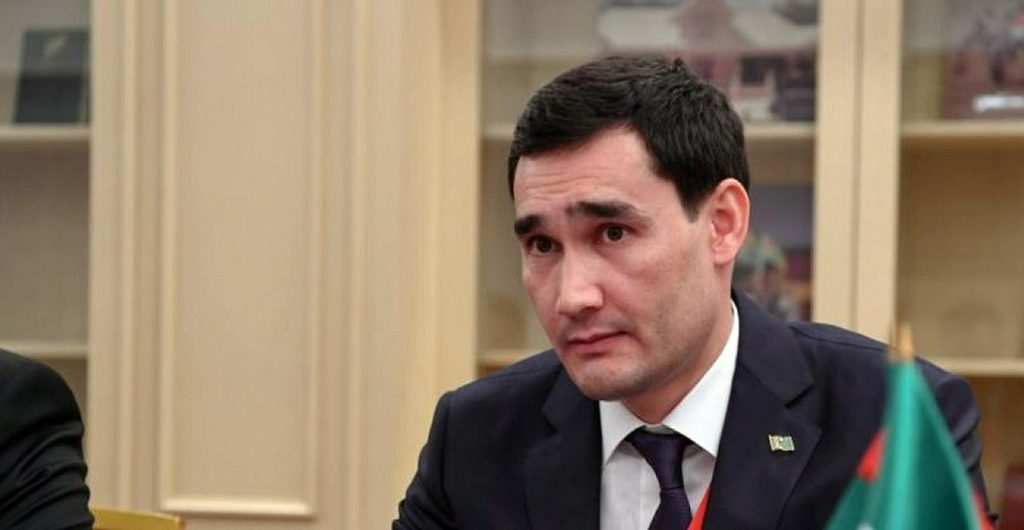
More on this story: Turkmen authorities control presidential power transfer
